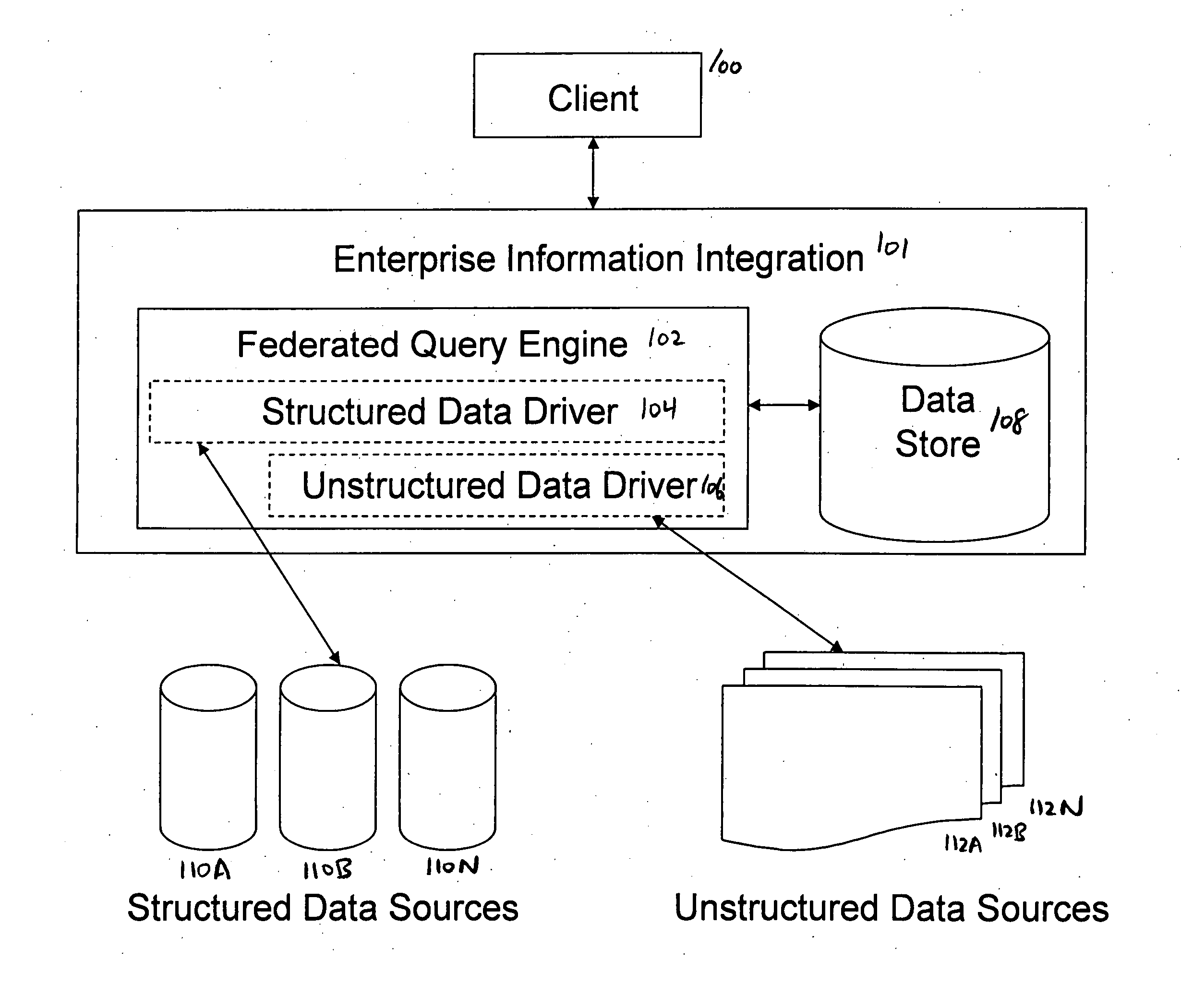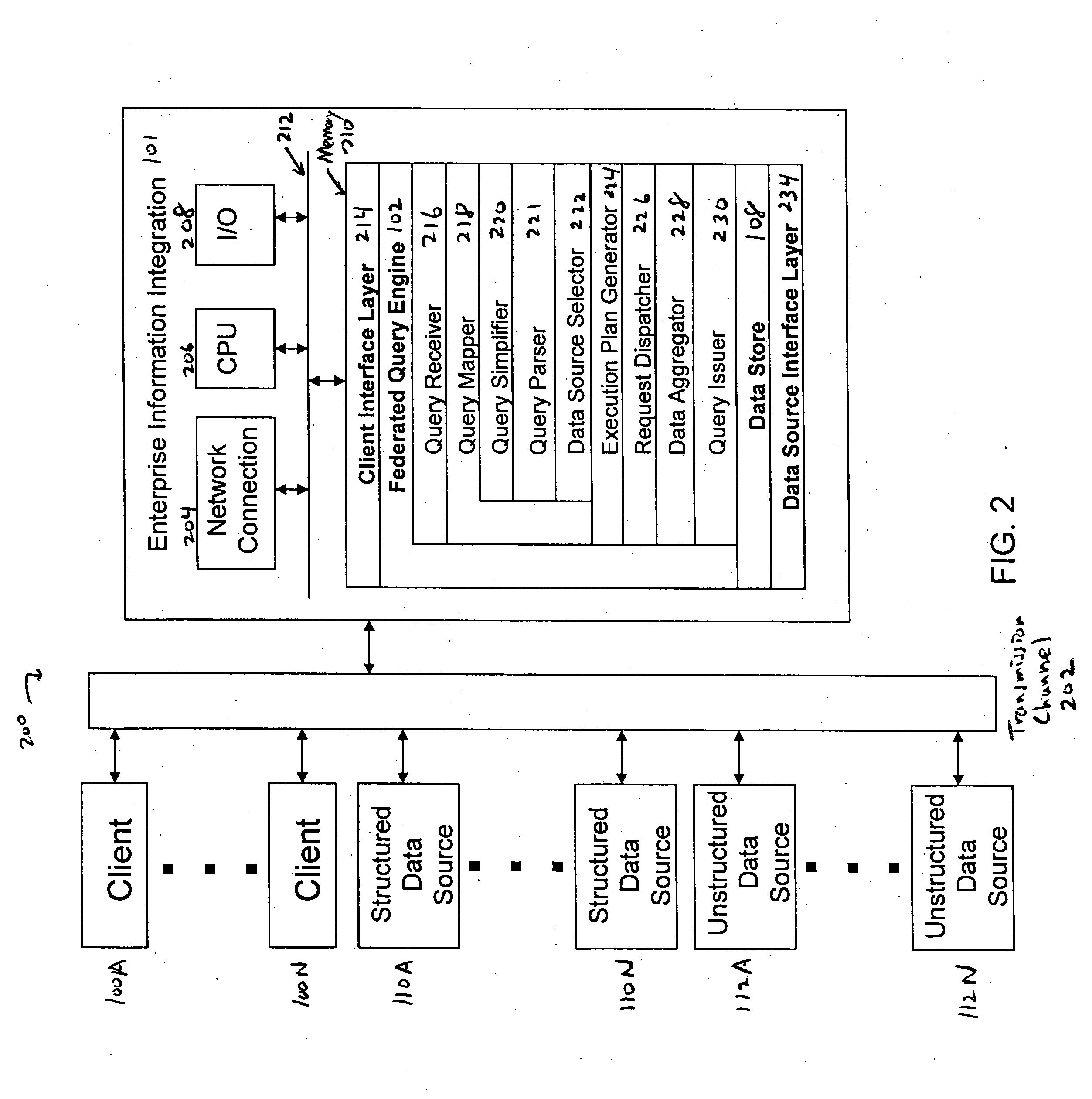Apparatus and method for federated querying of unstructured data
a data federation and data query technology, applied in the field of search data stores, can solve the problems of ineffective conventional etl (extract-transform-load) paradigms typically designed, eii does not yet provide uniform search capabilities across all data sources, and the complexity of the data store maintained by large corporations has grown
- Summary
- Abstract
- Description
- Claims
- Application Information
AI Technical Summary
Benefits of technology
Problems solved by technology
Method used
Image
Examples
Embodiment Construction
[0019]FIG. 1 illustrates an enterprise information integration (EII) system 101 including a federated query engine 102 containing both structured data driver 104 and unstructured data driver 106 functions, in accordance with one embodiment of the present invention. A client 100 makes a query request for data using a grammar such as SQL or XQuery to the EII system 101. The federated query engine 102 processes the client query. Based on the results of the query processing, the federated query engine 102 may issue one or more requests via software performing the function of one or more data drivers, which may be represented as a structured data driver 104 and an unstructured data driver 106. Each data driver serves the function of an abstraction layer between middleware of the federated query engine 102 and the specific characteristics of interfaces to structured data sources 110 (110A, 110B, and 110N in this example) and unstructured data sources (112A, 112B, and 112N in this example)...
PUM
 Login to View More
Login to View More Abstract
Description
Claims
Application Information
 Login to View More
Login to View More - R&D
- Intellectual Property
- Life Sciences
- Materials
- Tech Scout
- Unparalleled Data Quality
- Higher Quality Content
- 60% Fewer Hallucinations
Browse by: Latest US Patents, China's latest patents, Technical Efficacy Thesaurus, Application Domain, Technology Topic, Popular Technical Reports.
© 2025 PatSnap. All rights reserved.Legal|Privacy policy|Modern Slavery Act Transparency Statement|Sitemap|About US| Contact US: help@patsnap.com



